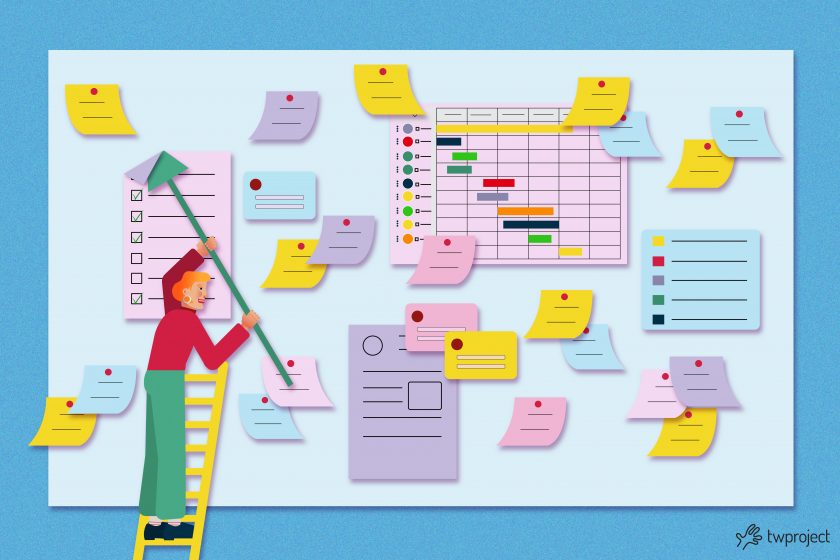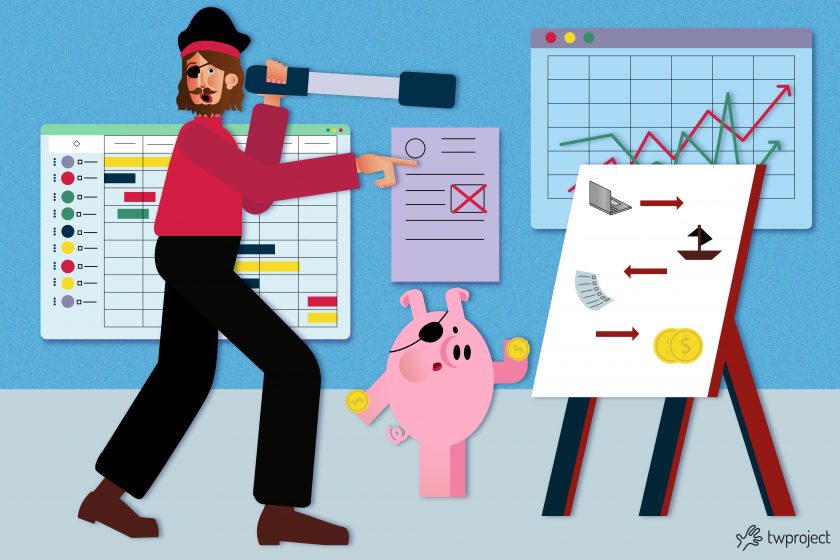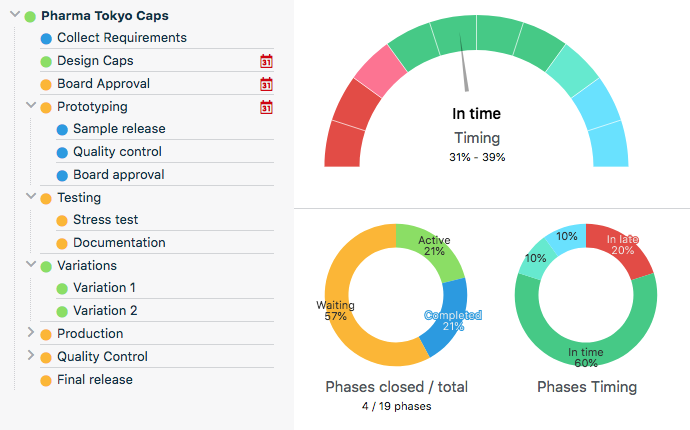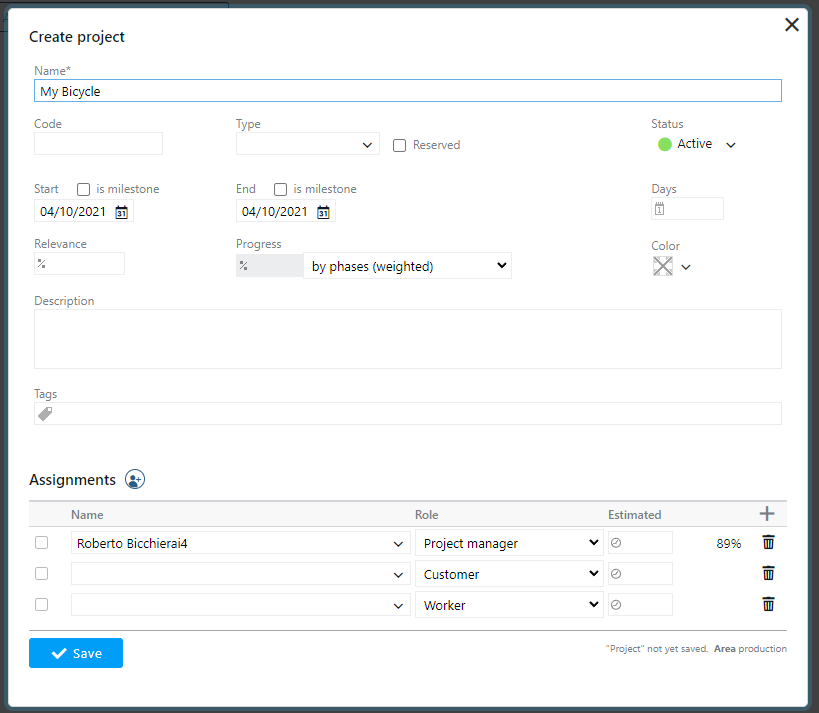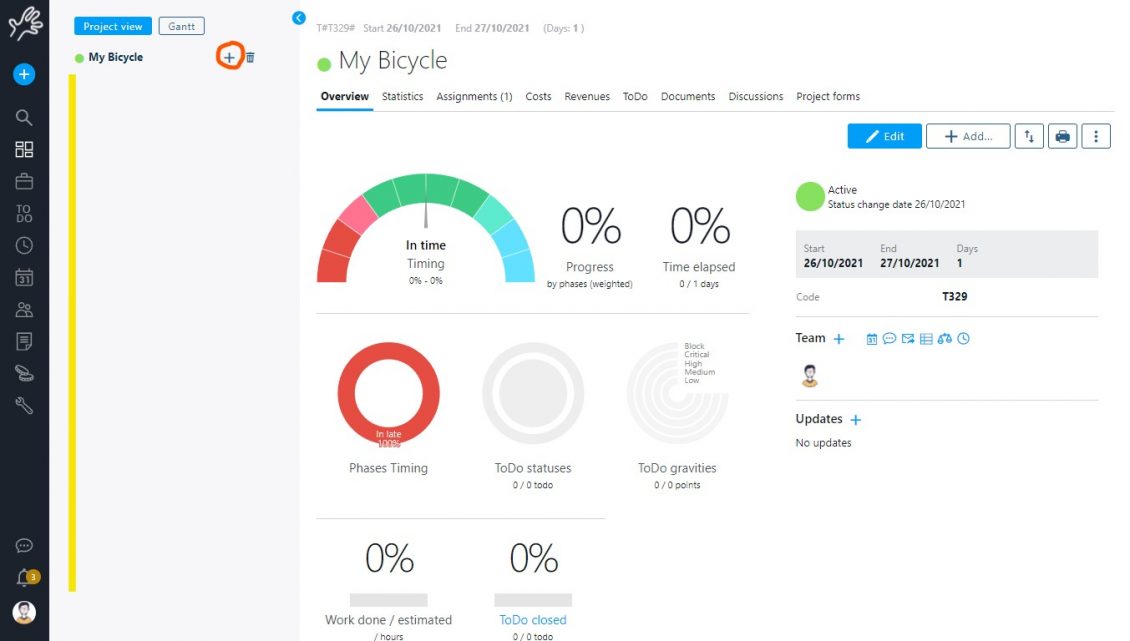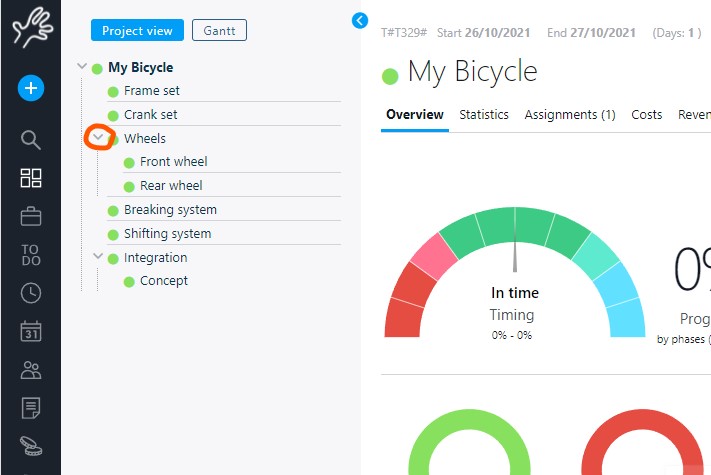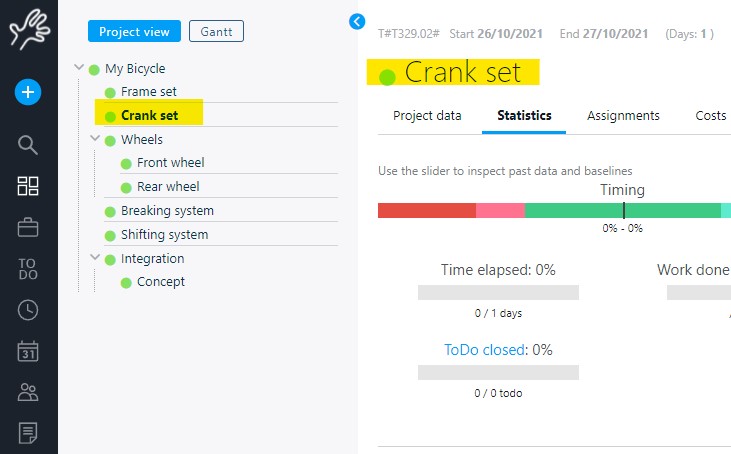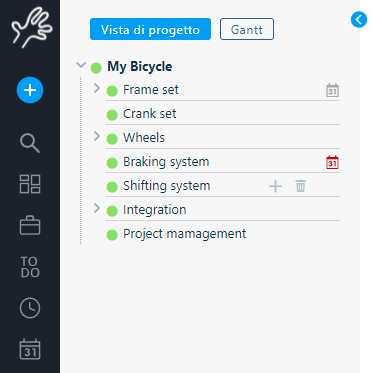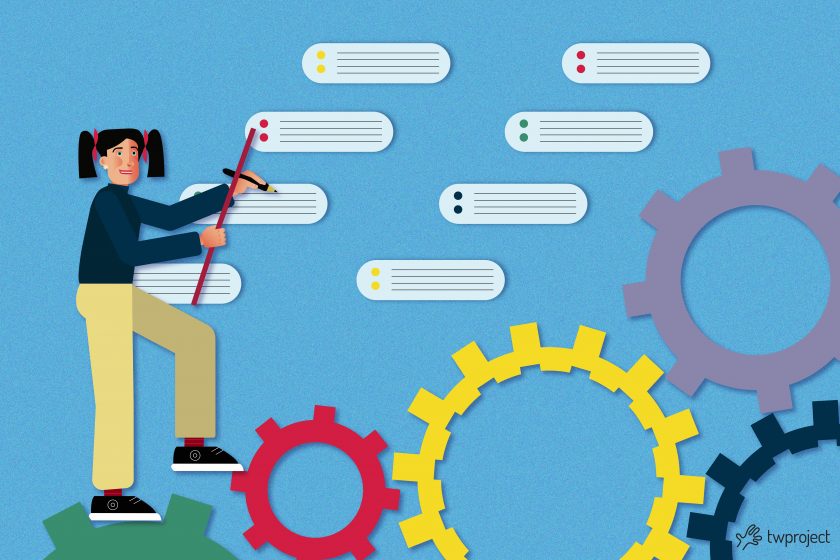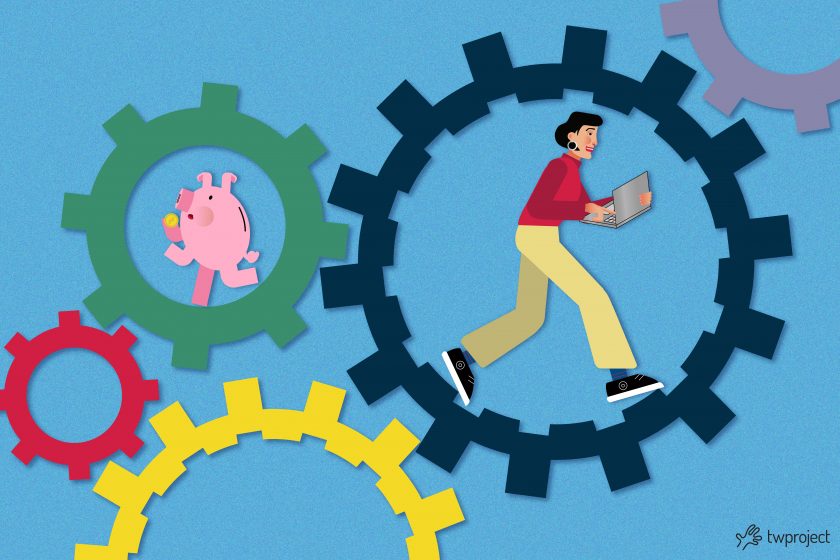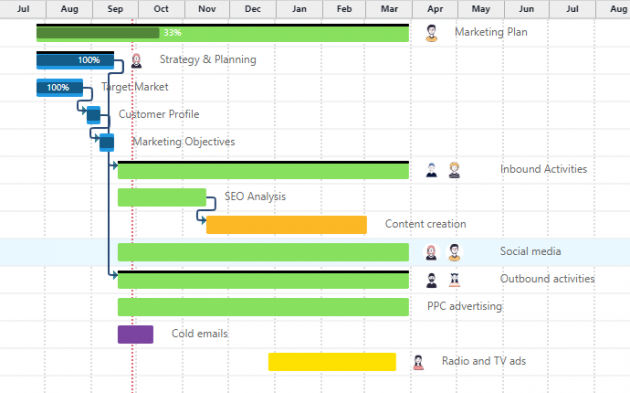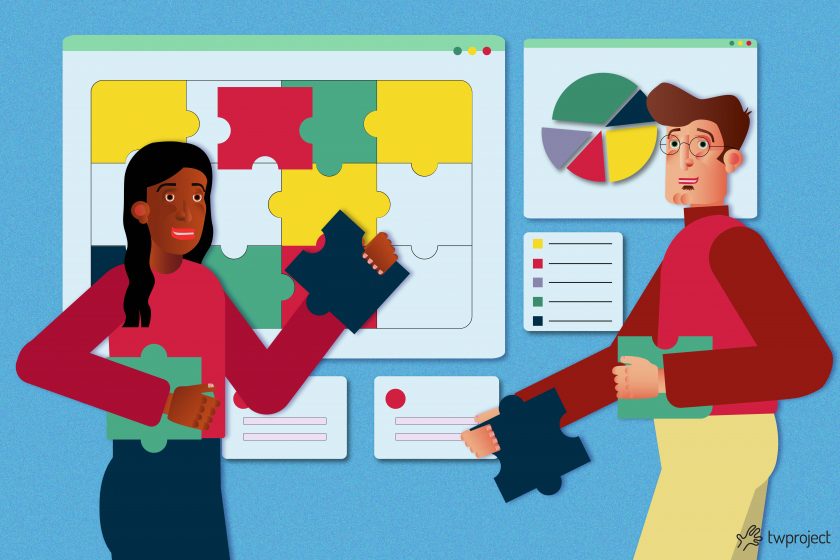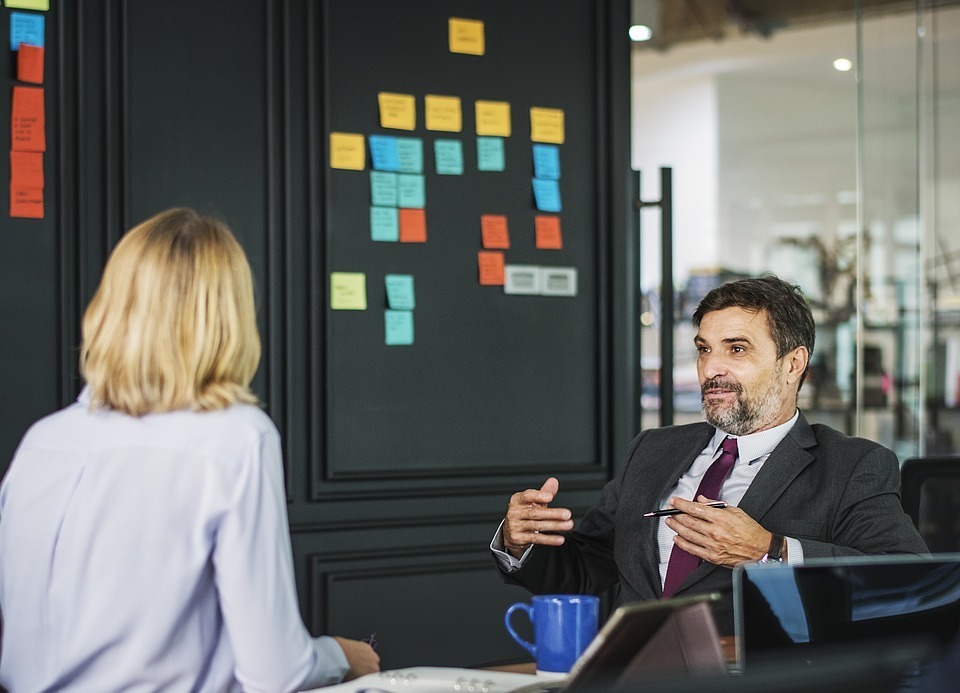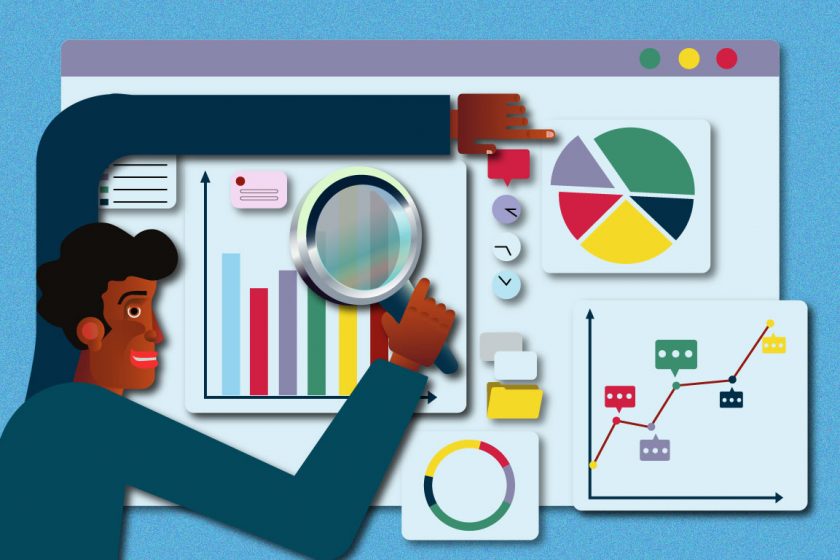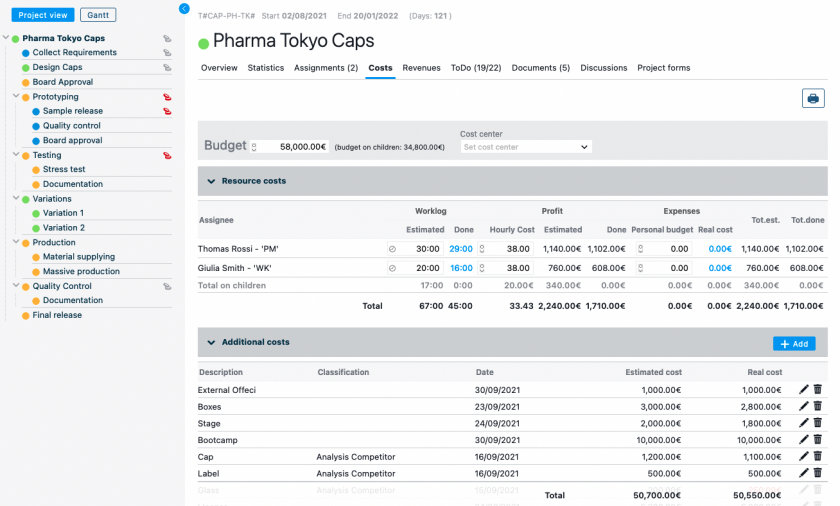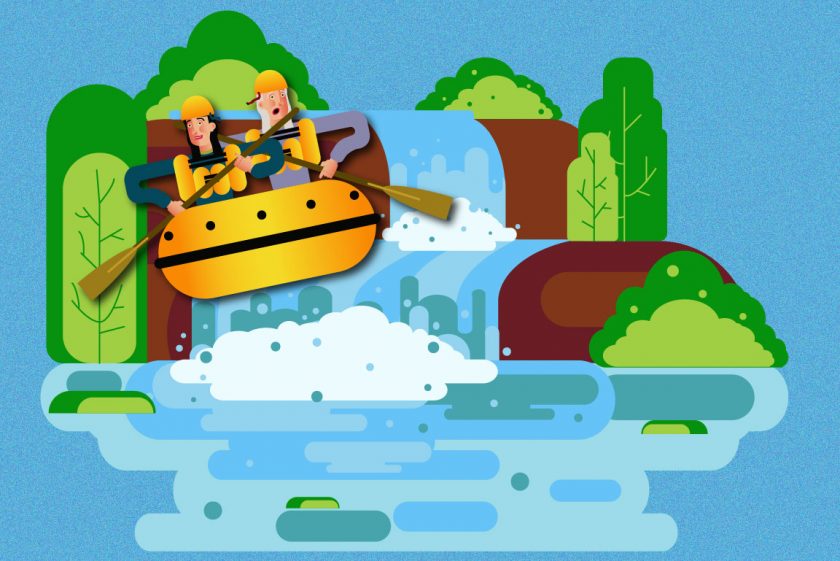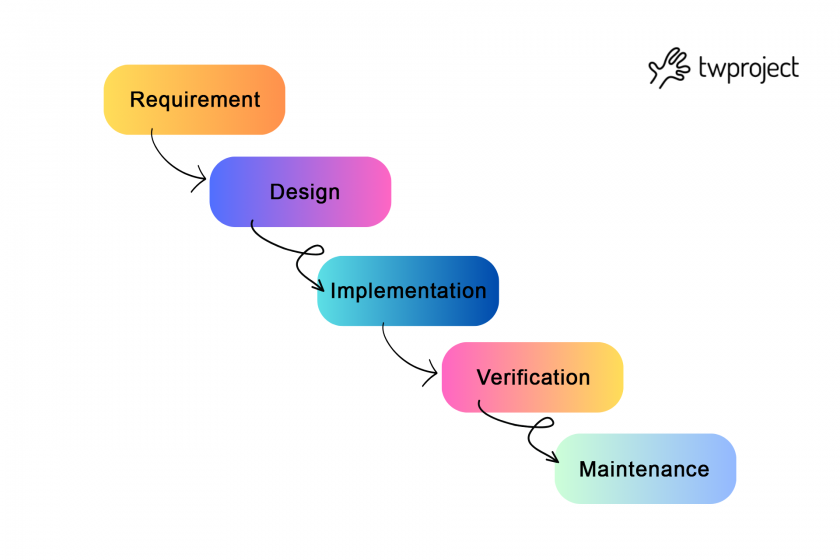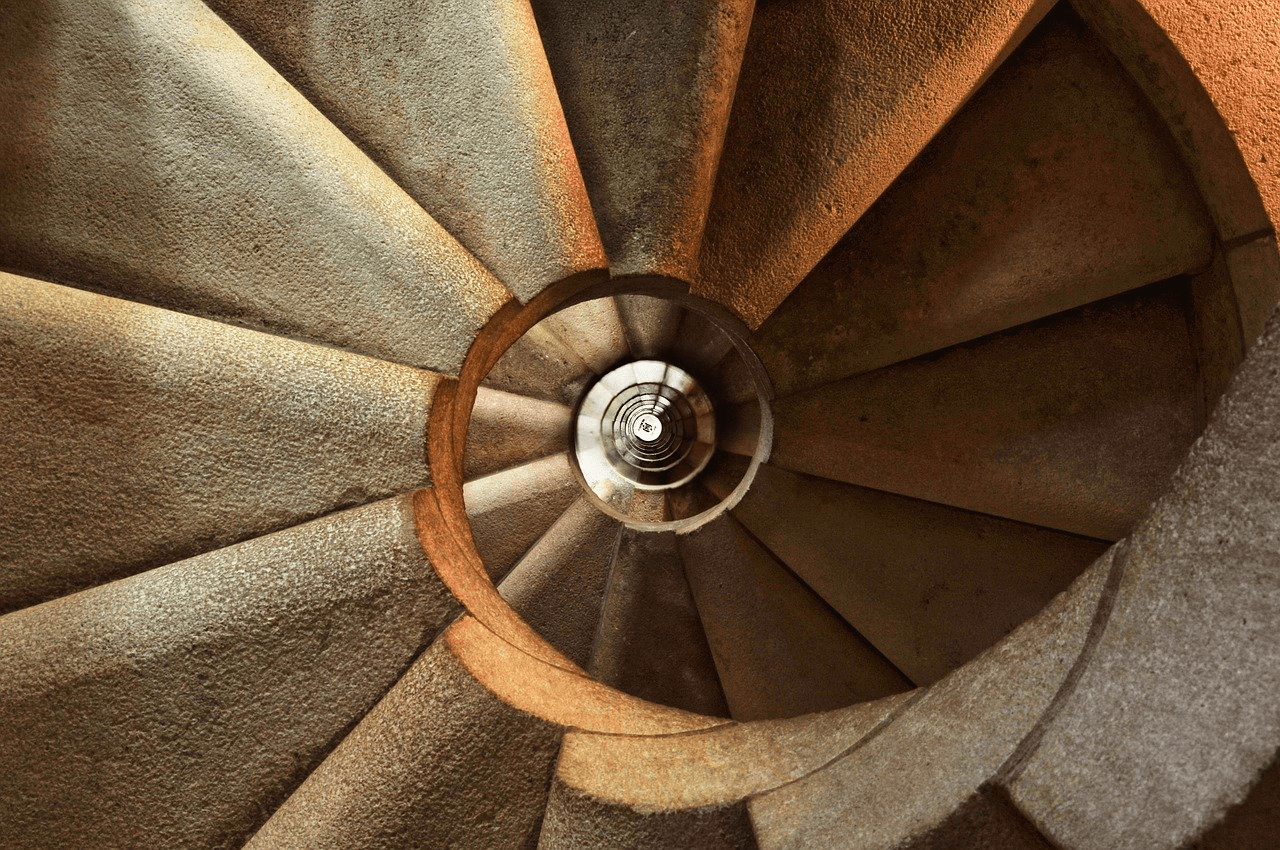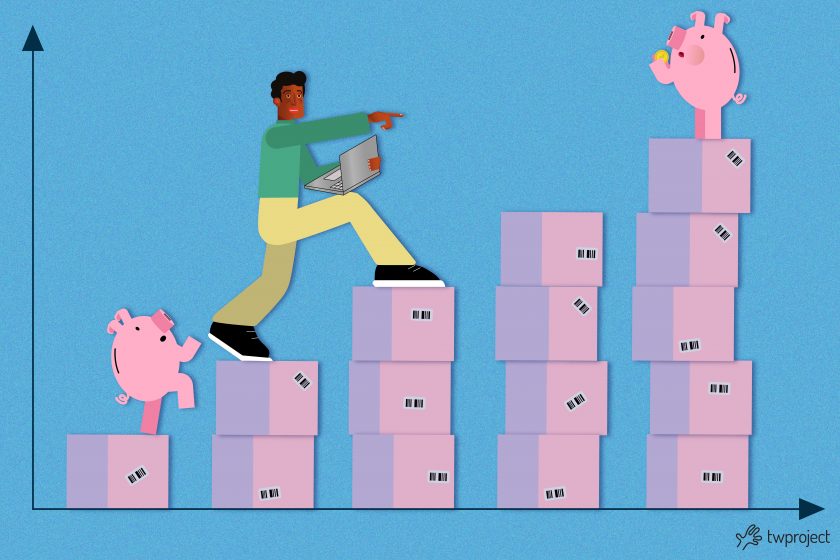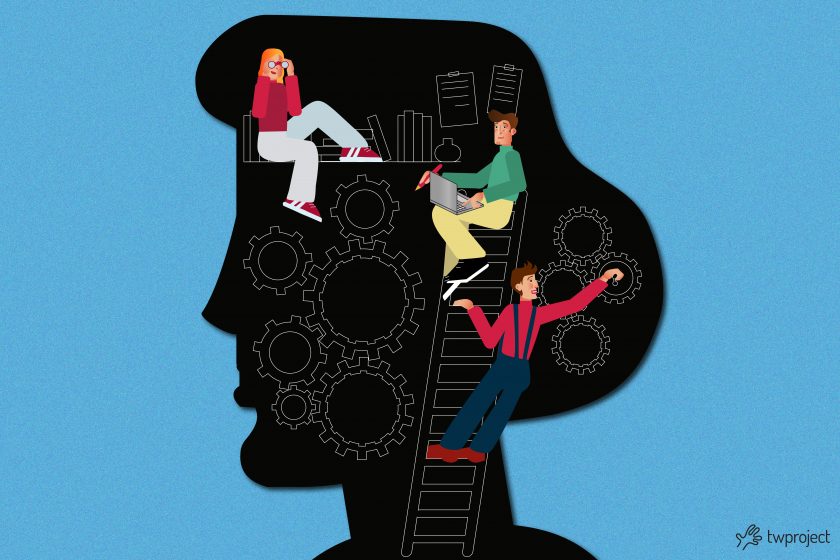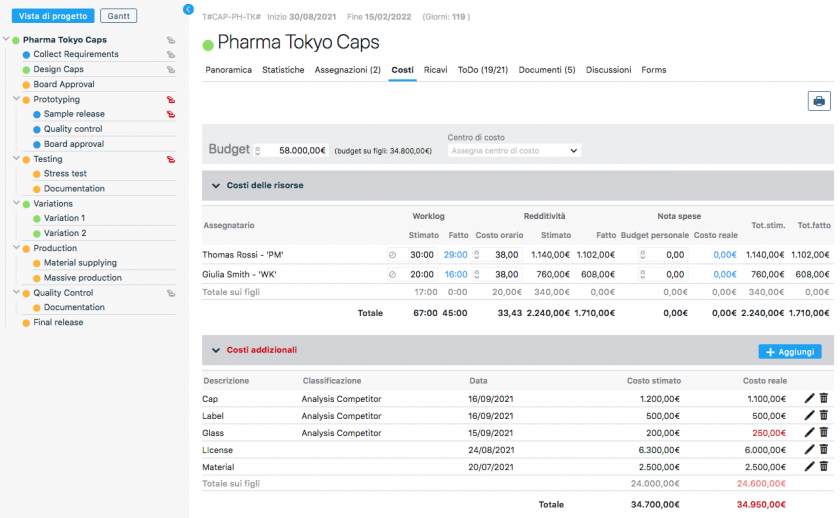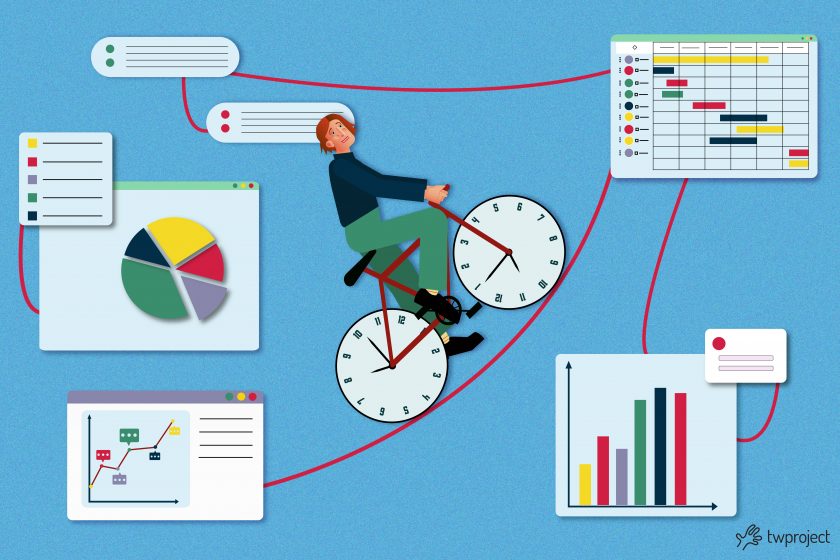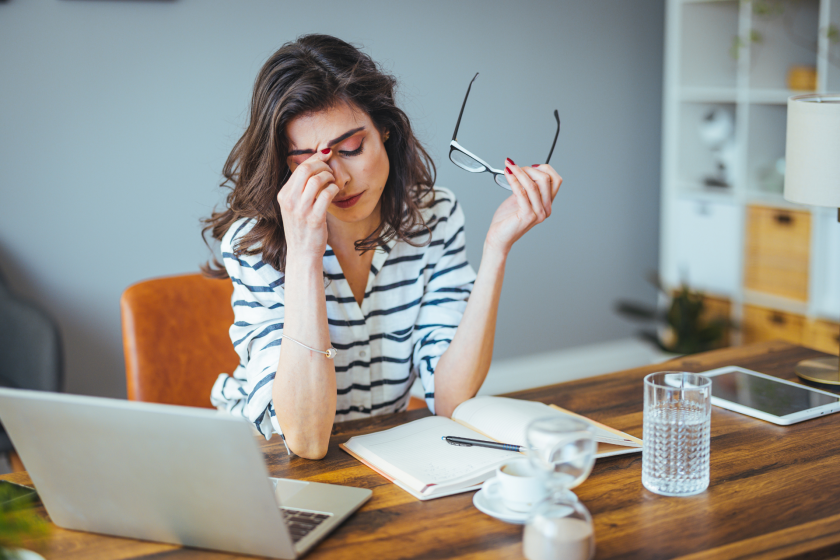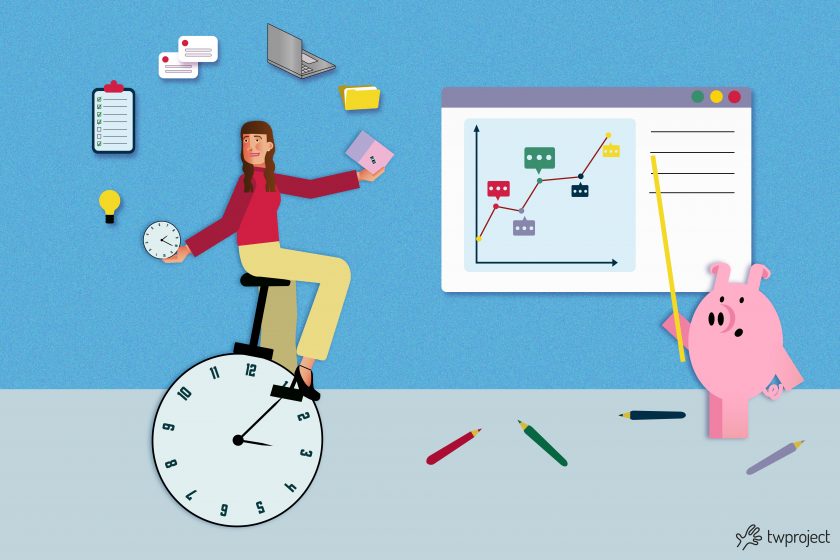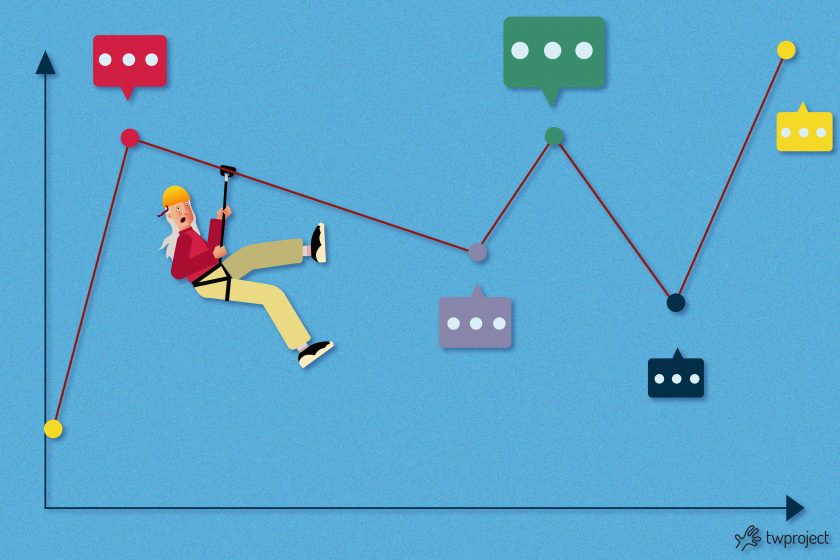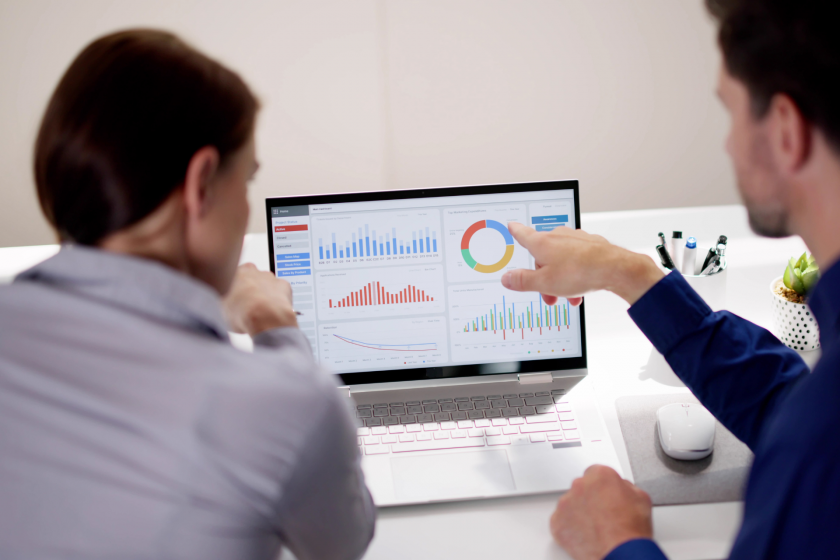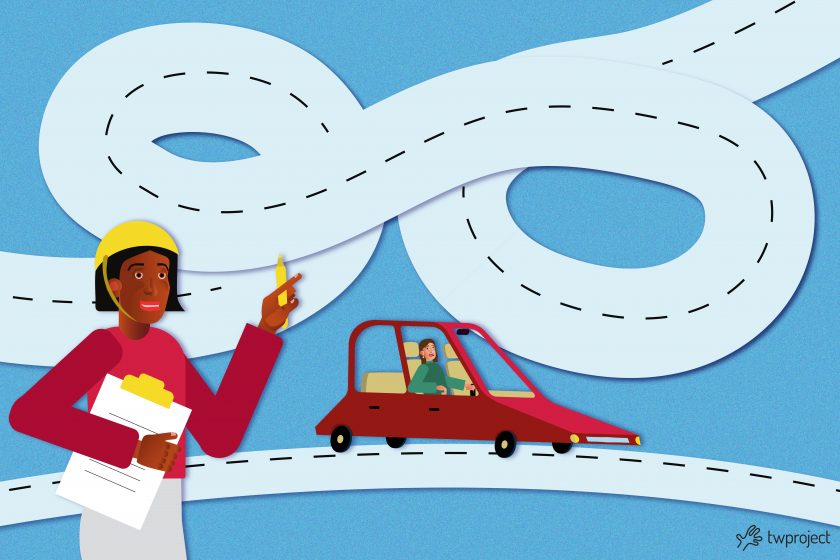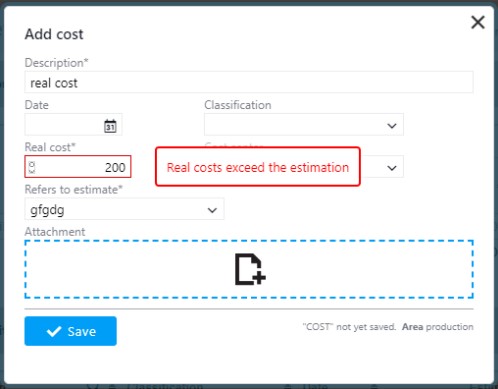In the age of digitisation, companies are constantly looking for ways to optimise their resources, both in terms of time and money.
Among the tasks requiring great effort is the work of project planning, which requires great care and attention.
Optimising this task not only means reducing the obstacles that can hinder its efficiency, but also using the experience gained to plan new projects at a later stage.
TABLE OF CONTENT
- 1. Advantages of using Templates
- 1.1. Process standardisation
- 1.2. Saving time
- 1.3. Increased productivity
- 1.4. Saving money
- 2. Twproject’s tools for creating and managing Templates
- 2.1. Creation of the basic Template
- 2.1.1. Setting the WBS
- 2.1.2. Creation of the Gantt chart
- 2.1.3. Assignments and ToDo’s
- 2.1.4. Costs and much more
- 2.2. Cloning an existing project
- 2.3. Creating a project from Template
- 2.3.1 Creating a project phase from Template
- Bottom line: Improved efficiency with Twproject Templates
One of the most effective strategies to achieve this is the creation and use of predefined templates.
In this article, we will explore how Templates can simplify work, improve project quality and contribute to significant cost savings.
1. Advantages of using a project Template
Let us now briefly see what benefits we will gain both on a corporate and personal level if we learn to use Templates efficiently.
In a second step, we will approach the topic from a practical point of view, showing you how digital project management tools can help you with this task.
1.1. Process standardisation
Templates are characterised by their standardised format that can be used by all team members.
This not only reduces the potential errors, but also ensures that all necessary information is included.
Indeed, consistent planning facilitates understanding and communication between departments.
1.2. Saving time
Entering the same data from scratch for each new project can be a time-consuming and demanding task.
Templates save valuable time, as project leaders will be able to concentrate on the new elements, instead of lingering on replicating predictable structures and entering known data.
This is particularly useful for project structure, schedules, and assignments.
1.3. Increased productivity
With the use of templates, the planning manager can focus on the innovative and strategic aspects of the project rather than the organisational ones.
This increase in productivity translates into greater operational efficiency and, consequently, improved business results.
1.4. Saving money
An investment in systems that allow the creation of high-quality templates that can be used repeatedly can lead to considerable savings in programming and planning costs.
In addition, less time spent on recurring data compilation also means the possibility to focus on improving the financial strategy.
2. Twproject’s tools for creating and managing Templates
Twproject offers some practical solutions to achieve these goals and save a lot of valuable time with the use of Templates.
A preliminary point: Twproject allows you to create predefined templates from scratch to use as a model, but also to use a real project already entered in the system as a basis for similar projects.
Even in this respect, Twproject makes flexibility its strong point, adapting to the way different teams work and responding to the needs of each one.
2.1. Creation of the basic project Template
From the Project List page, a new Template can be added.
A window will appear in which to enter the master data of the model we want to create, such as title, duration, participants and other possible information.
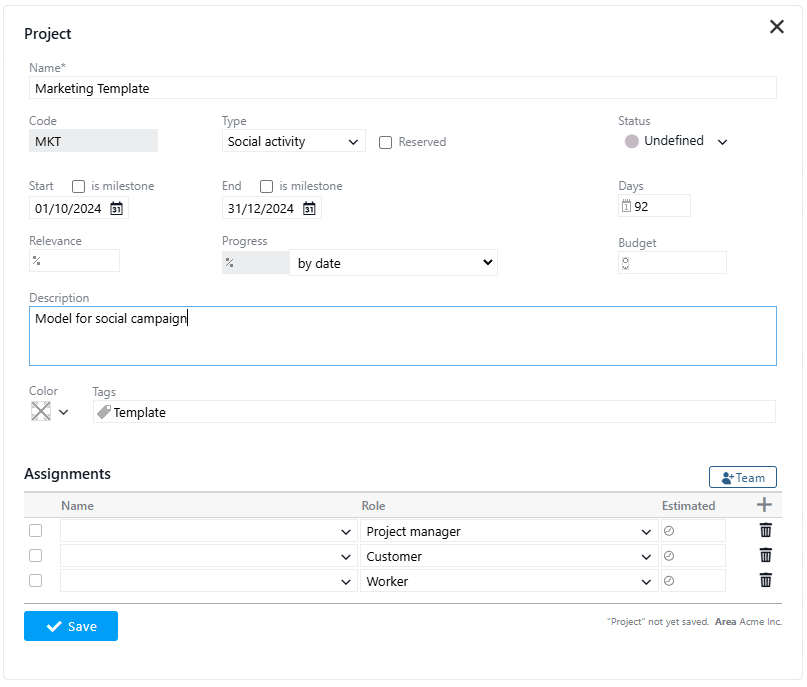
In this way we would create a project with an ‘undefined’ status that would not appear in the project list, but which we could use several times as a starting point for projects with certain characteristics.
There are many customisations we can apply to this model. Let us see some of them.
2.1.1. Setting the WBS
We can assign certain phases and sub-phases to our project model, to which we can later assign the corresponding timeframes.
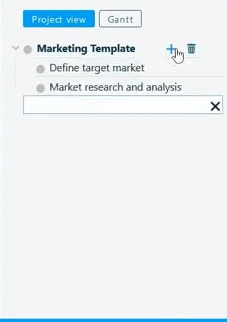
The project structure, or WBS, can in fact be recurring on various projects, and if we optimise its creation we will achieve considerable time savings, especially for complex and structured projects.
Furthermore, we will not risk forgetting any stage and will create a predefined protocol to be followed for all future projects of a given type.
2.1.2. Creation of the Gantt chart
The next step after the definition of the WBS is its scheduling.
The Gantt chart setting allows the duration of each phase and the time correlation between them to be established.
Twproject’s Gantt chart is also extremely flexible and offers us the possibility of setting different types of dependencies between phases, with less or more elasticity in the progression.
When we use the template thus created for the planning of a real project, all we have to do is change the start date and the whole schedule will be modelled on what we have planned on the template.
2.1.3. Assignments and ToDo’s
As is often the case, if a team member is typically assigned to a certain phase of a project, it will be useful to assign that resource to that phase from the moment the template is created.
At a later stage we can of course add other operators or make any necessary changes.
But that’s not all: the template generated with Twproject also makes it possible to assign predefined tasks, so-called project ToDo’s, to the resources involved.
Assigning ToDo’s can be a huge task for the project manager if there are so many micro-tasks to distribute and follow up.
Therefore, if we optimise the compilation of these tasks, we will have a great acceleration in the programming phase of the projects realised through our template.
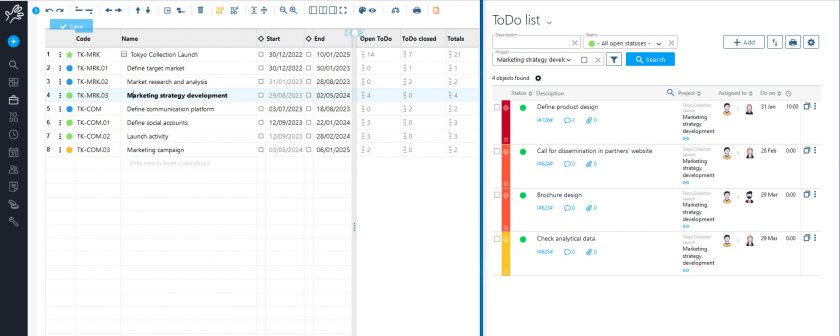
2.1.4. Costs and much more
As we have seen, project Templates are very customisable according to our needs and allow us to insert all kinds of data that may be useful in the future.
This data to be pre-filled may include, for example, the budget for foreseen ancillary expenses, which we enter in the cost management report. Or even the estimated costs for staff work, through which we will begin to build up the cost statement as soon as the template is drawn up.
But we can also pre-insert: documentation, useful links, general information, expected revenues and all sorts of data that also appears on classic projects.
Everything will, of course, be editable later, both on the template itself and directly on the projects that will result from it.
2.2. Cloning an existing project
Even in the case where we do not want to create predefined templates, but rather prefer to use an existing project as a template for a future project, Twproject comes to our aid.
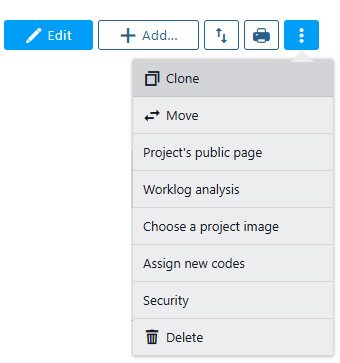
From the options of the original project, you can select the ‘Clone’ function: this will open a window of options allowing you to select which and how much information to copy into the new target project.
It is easy to imagine how many improvements such a feature can offer us.
Just think of recurring projects that are repeated with the same time and human resources structure from year to year. Cloning the previous year’s project will save a considerable amount of valuable time.
In addition, it will also be possible to convert the cloned project into a Template, thus enabling us to start from a model with real data and then keep it available for all future projects of the same type.
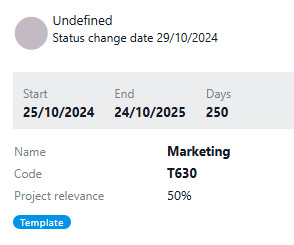
All you need to do is change the project status from ‘Active’ to ‘Undefined’ and use the tag Template.
From that moment on, the template can be selected from those available when creating a new project.
2.3. Creating a project from Template
And finally, here is how to use the templates created, whether you started from an empty template or chose to use an existing project.
When creating a new project, we can select the item ‘Create a project from template’ that appears in the selection menu on the ‘Add’ button of the Project List page.
The project thus created will already contain all the pre-filled data we have entered in the source template.
2.3.1. Creating a project phase from Template
The use of Templates is also available for the creation of a single project phase.
As in the example used here, you may in this case choose to use the ‘Marketing’ template to manage the promotion phase of a larger project.
And the new project or phase will already contain all the information we decided to import beforehand, saving us an incredible amount of time and effort.
Bottom line: Improved efficiency with Twproject Templates
We can summarise by saying that with the use of Templates you can improve the efficiency of project management for your company.
Twproject‘s Templates allow you to enter a lot of source data, covering the entire project lifecycle, from the time schedule to the organisational structure, costs and so on.
All this will not undermine the flexibility that remains as a basic approach in Twproject: changes and adjustments can be made at a later date, helping you to better manage your planning time.
If you would like to try out this and many other features in Twproject, the only truly comprehensive project management software, you can do a 15-day free trial during which our support team will be at your disposal for any doubts or questions.

